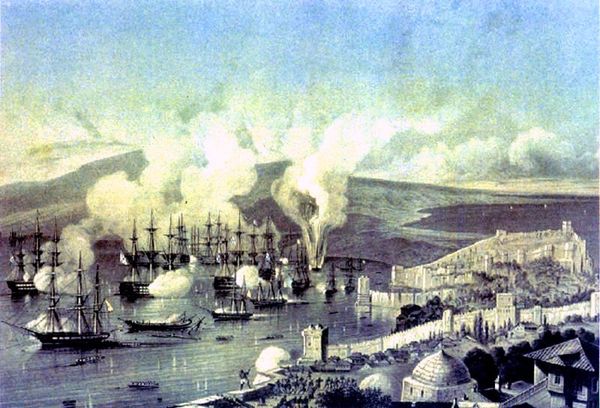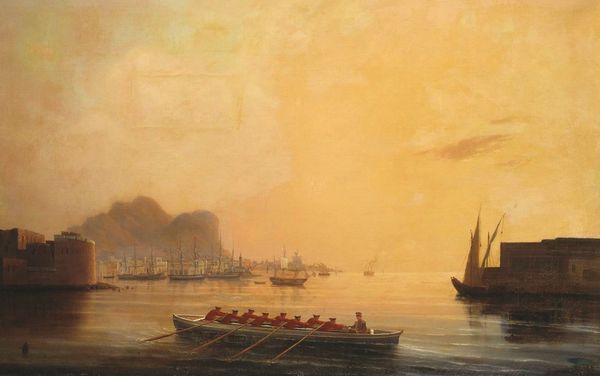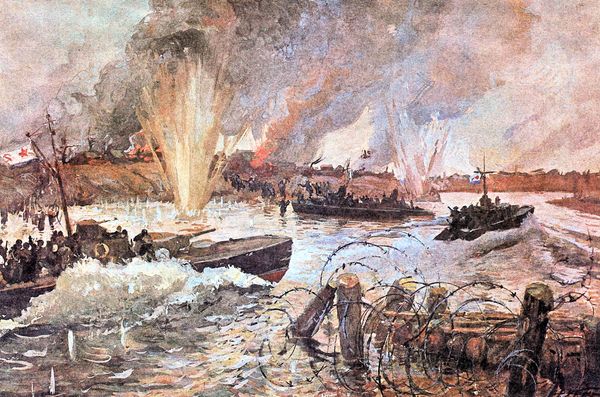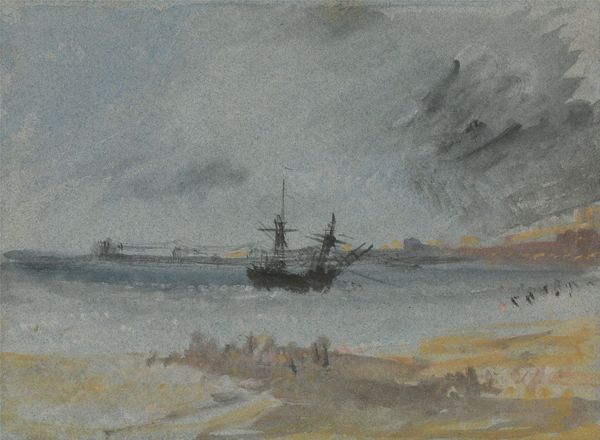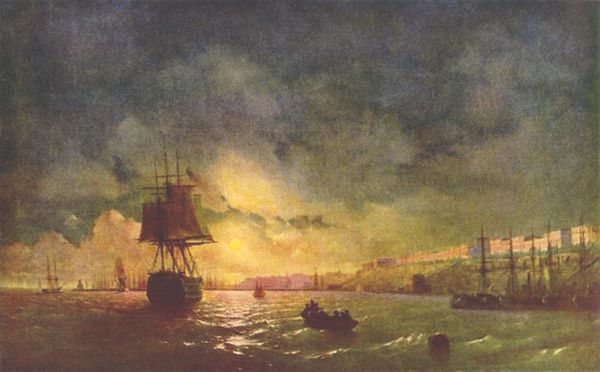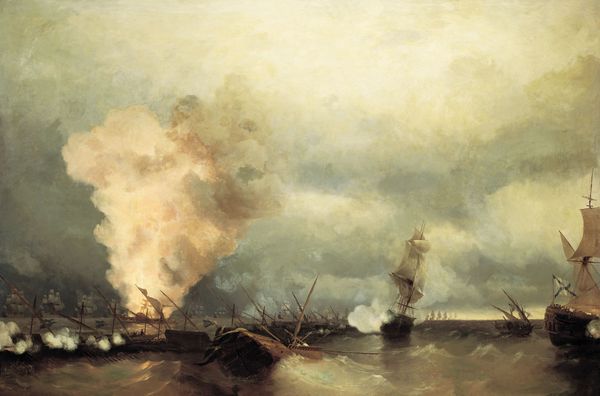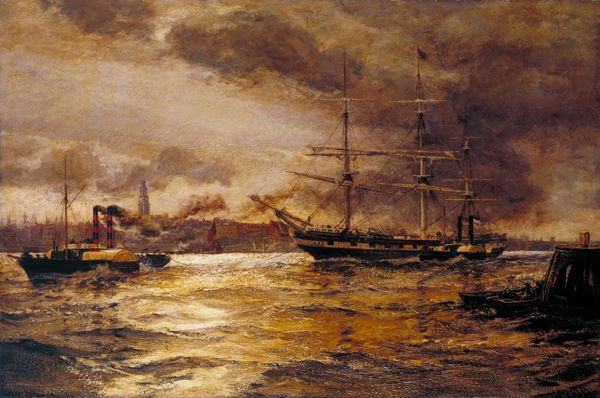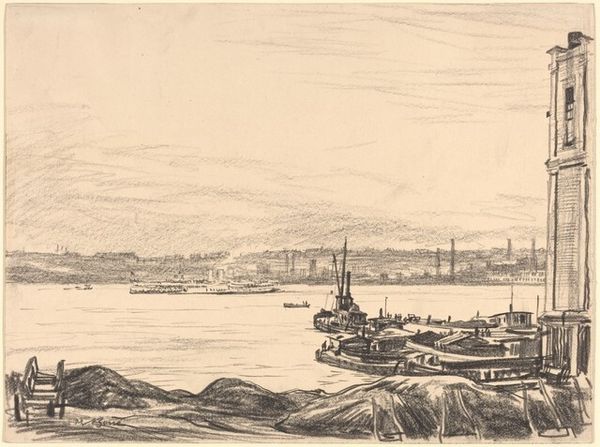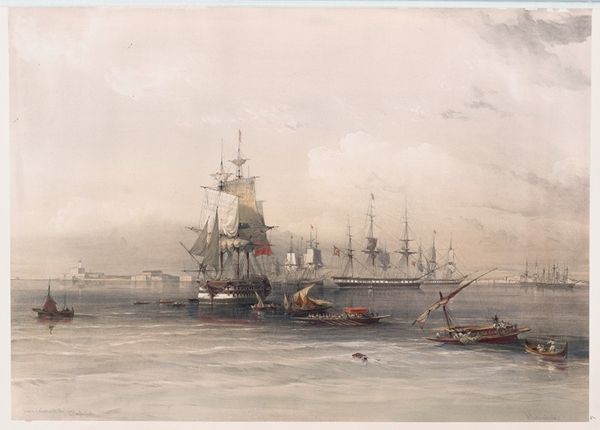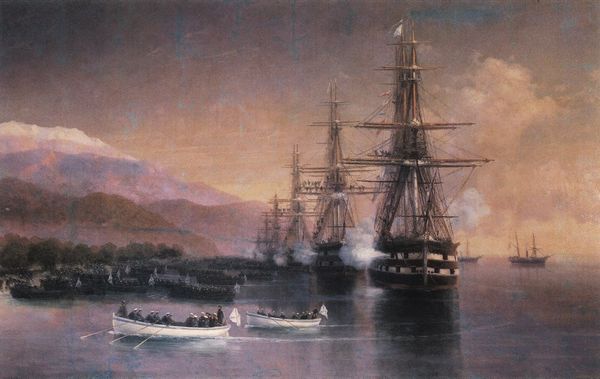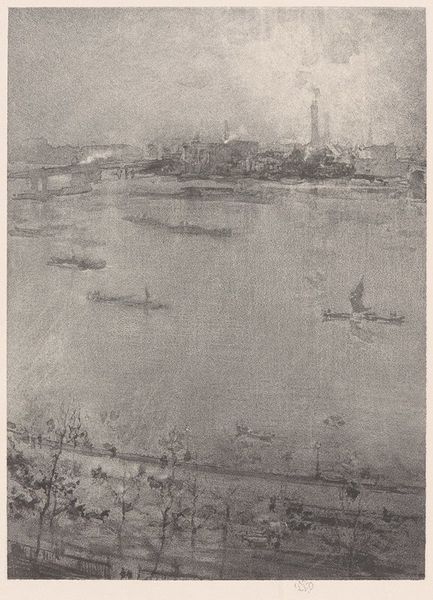
Breakthrough of the Dnepr military fleet at Loyev during the Polish-Soviet War on 4th July 1920 1948
0:00
0:00
Copyright: Veniamin Kremer,Fair Use
Curator: What a dynamic scene. Looking at this painting, I feel like I can almost hear the chaos. Editor: Indeed! This piece is Veniamin Kremer's depiction from 1948 of the "Breakthrough of the Dnepr military fleet at Loyev during the Polish-Soviet War on 4th July 1920." Curator: Gosh, for me, that title itself is a history lesson! I see the vessels churning through the river and a bridge under what appears to be heavy fire. The palette is dominated by muted blues, grays and browns which contributes to the painting's sense of turbulence. Editor: If we think about artistic creation and labour, consider how Kremer utilized oil paint to achieve these dramatic effects. There's a definite nod towards Impressionism, especially in how light and movement are portrayed. Curator: The scene definitely vibrates. Thinking about it, for all the evident destruction and trauma of warfare represented, the brushstrokes possess an undeniable raw beauty. There's something almost lyrical about the way the smoke curls into the sky. Editor: War paintings were a prominent way to disseminate political messages and instill particular sentiments about national identity. Kremer's choice of subject indicates an engagement with the Soviet narrative surrounding this conflict. The production of prints made it accessible to many, influencing wider consumption. Curator: The shattered bridge appears both tragic and defiant. But, tell me, does that visible element also have something symbolic to contribute to what happened in the war itself? Or just a detail for our understanding and recollection of past moments? Editor: Well, for sure bridges are connecting infrastructure of any economy. Here that destruction highlights, perhaps, the economic repercussions and infrastructural damage inflicted during that war. How material resources were destroyed in the process. Curator: So, it's about destruction beyond lives; rather about economies. Makes you really stop and ponder, huh? Editor: Precisely. It causes to consider all aspects of the conflict: material, human and ideological. Curator: It also gives another understanding about the real human toll during such happenings and that is something we do not speak about easily. Editor: Yes. In some respects we only analyze wars' political scope. This offers many windows on those times.
Comments
No comments
Be the first to comment and join the conversation on the ultimate creative platform.

